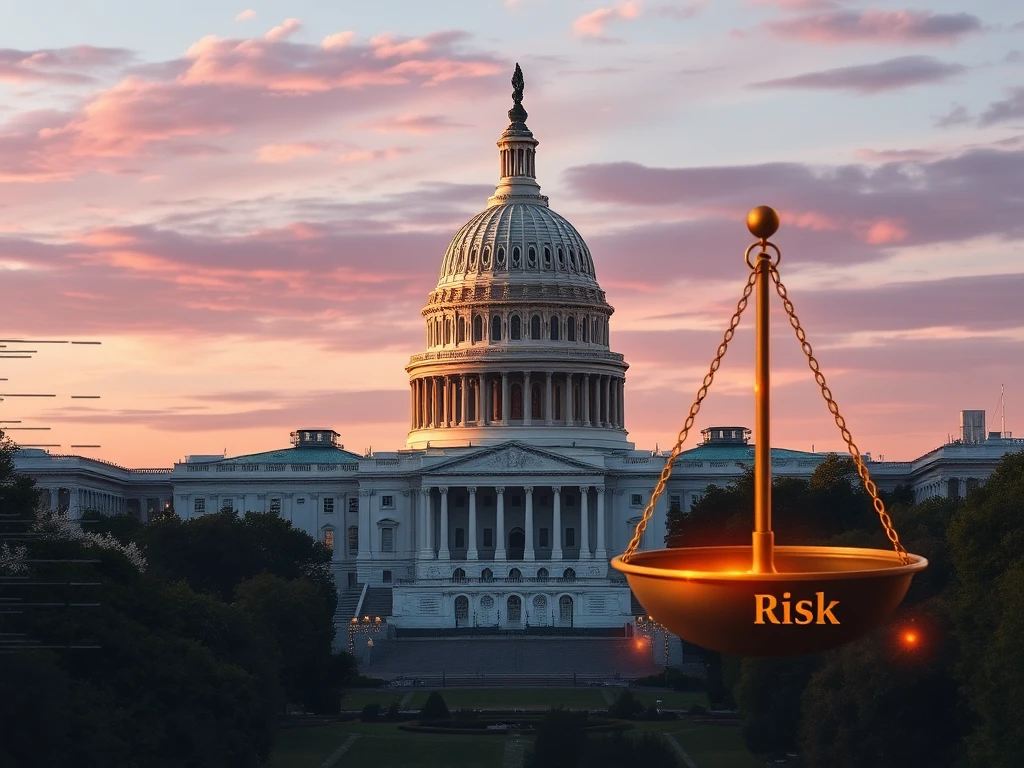Urgent: US Senate Passes GENIUS Act Amid Stablecoin Systemic Risk Warnings

The US crypto industry is watching closely as legislative efforts continue. A significant development recently occurred when the US Senate passed a key piece of legislation aimed at providing clarity for Stablecoin Regulation.
The US Senate Acts: Passing the GENIUS Act
In a notable bipartisan move on June 17, the US Senate voted to pass the GENIUS Act. This bill, formally known as the Generating Innovative New Security Insights for Unified Stablecoins Act, aims to create a regulatory framework specifically for stablecoins in the United States. Introduced by Tennessee Senator Bill Hagerty about six weeks prior, the bill passed with a 68-30 vote. This is a significant step for the crypto industry, which has long sought clear rules.
Key provisions of the GENIUS Act include:
- Specific rules for stablecoin issuers.
- Mandatory Anti-Money Laundering (AML) measures.
- A requirement for stablecoins to be backed 1:1 with reserves like US dollars and short-term Treasury securities.
Proponents, like Senator Hagerty, argue the bill will bolster US dollar dominance and protect consumers. Hagerty also stated it would “drive demand for U.S. treasuries.” However, not everyone agrees on the potential positive impacts, particularly regarding the Treasury backing requirement.
Navigating Potential Pitfalls: Treasury Market Risk
While the passage of the GENIUS Act is seen by many as a positive step for Stablecoin Regulation, some economic and legal experts have voiced concerns, specifically regarding the implications for the US Treasury Market. Professor Yesha Yadav of Vanderbilt University and Brendan Malone, formerly with the Federal Reserve Board, published a paper highlighting potential issues.
Their core argument centers on the bill’s preference for US Treasurys as a backing asset. As crypto-focused lawyer Aaron Brogan put it, the bill essentially “deputizes stablecoin issuers as wholesale buyers of U.S. debt,” with the 1:1 collateral rule directing new revenue into Treasury bills.
The concern is whether the current state of the Treasury Market can scale adequately to handle potentially massive inflows and outflows from a rapidly growing stablecoin sector.
Understanding Stablecoin Systemic Risk
The potential for Systemic Risk arises from the increasing connection between the growing stablecoin market and the dynamics of the Treasury Market. Yadav and Malone point out the significant growth in stablecoins, from around $2 billion in 2019 to roughly $230 billion by Q1 2025.
They highlight that while current stablecoin holdings of Treasurys might be manageable relative to the secondary market’s trading volume (around $900 billion), this could change dramatically as stablecoins grow. A large issuer like Circle, with a $60 billion supply, could potentially face challenges if forced to liquidate a significant portion of its Treasury holdings during market stress.
Adding to this concern are recent issues with Treasury Market liquidity, stemming from factors like:
- Increased competition from high-speed trading firms.
- Post-2008 regulations requiring banks to hold more capital, reducing their incentive to act as market makers.
- The dramatic increase in outstanding tradable Treasury debt, from $4.8 trillion in August 2008 to $28.6 trillion by March 2025.
These factors mean there might be fewer buyers available for large blocks of debt, precisely the situation that could occur if a stablecoin firm faced insolvency and a rush of redemptions.
Neither Treasury Market illiquidity nor stablecoin runs are purely theoretical. Circle experienced a $2 billion redemption event following the Silicon Valley Bank collapse. Treasury markets saw significant illiquidity during the March 2020 COVID chaos and again in April 2025 following US trade policy shifts, leading to distorted prices and trading difficulties.
This interconnectedness means that a run on a large stablecoin could overwhelm an illiquid Treasury Market, potentially making the stablecoin issuer insolvent and, in turn, impacting the credibility and functioning of the Treasury Market itself. Furthermore, increased demand from stablecoins could potentially influence US funding policy, potentially shifting the focus towards the short-term Treasurys favored by the GENIUS Act, which could alter how the government finances long-term initiatives.
The Road Ahead: House Reconciliation and Political Hurdles
Before the GENIUS Act becomes law and its potential impacts on the Treasury Market are fully tested, it must pass the House of Representatives. The House has its own stablecoin bill, the STABLE Act, which also aims to regulate the sector. The two bills differ in structure and scope, reflecting ongoing discussions around federal oversight, state regulatory coordination, and the treatment of algorithmic stablecoins.
Reconciling these two pieces of legislation will be necessary. While the bipartisan Senate vote suggests momentum, political concerns remain. Some figures, like Senator Elizabeth Warren and Congresswoman Maxine Waters, have expressed strong reservations, particularly linking crypto industry support to political figures like Donald Trump and raising concerns about consumer protection and national defense.
Conclusion
The passage of the GENIUS Act by the US Senate marks a pivotal moment for Stablecoin Regulation in the United States. While celebrated by many in the crypto industry for providing clarity, it also raises important questions about the potential impact on the US Treasury Market and the possibility of Systemic Risk. As the bill moves to the House for reconciliation with the STABLE Act, lawmakers face the complex task of balancing innovation and consumer protection with the stability of traditional financial markets. The debate over how best to integrate stablecoins into the broader financial infrastructure is far from over.








